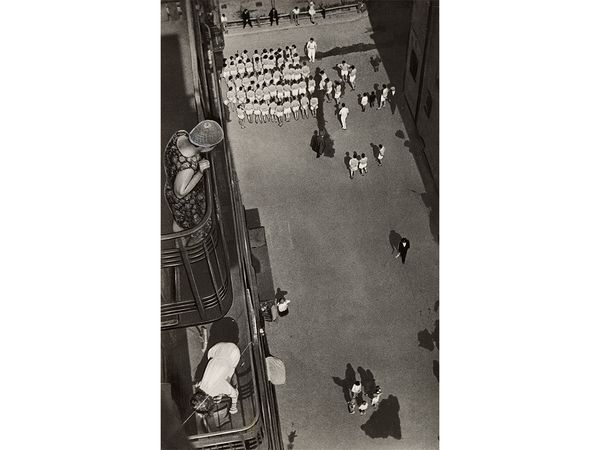Alexander Rodchenko, Gathering for a Demonstration, 1928. Photographs New York.
All of us who love art have tremendous respect for the discerning few whose eyes latch onto works with incredible foresight, presaging any market trends and illuminating ideas for the future. Every so often, the keen eyes of such a passionate collector meet our own in public exhibition, as is the case with the incredible collection of photographs in the single-owner selection Figure + Form, on offer in our Photographs auction on 5 April and on view to the public through 4 April.
This remarkable collection was mostly assembled in the 1990s and early 2000s as the market for photographs began to flourish. With a focus on exceptional examples of classic and midcentury photographs, it features works by iconic artists who pushed the field of photography to its very limits and set the stage for the celebrated place the medium holds today.

Harry Callahan, (Untitled) Telephone Wires, 1945–1976. Photographs New York.
Leaning towards a Modernist aesthetic, the works in the collection show artists exploring a kind of push-and-pull, where portraiture and the human figure meet structural, graphic qualities and contrasts of form. The works showcase a true connoisseur’s eye: from explorations into abstraction by Harry Callahan and Aaron Siskind to the documentary portraiture of Irving Penn and W. Eugene Smith and depictions of modern environments in works by Alexander Rodchenko and Tina Modotti. What’s more, the collection offers something tantalizing and desirable — high-quality, rare prints with exceptional provenance that have long been in private hands.
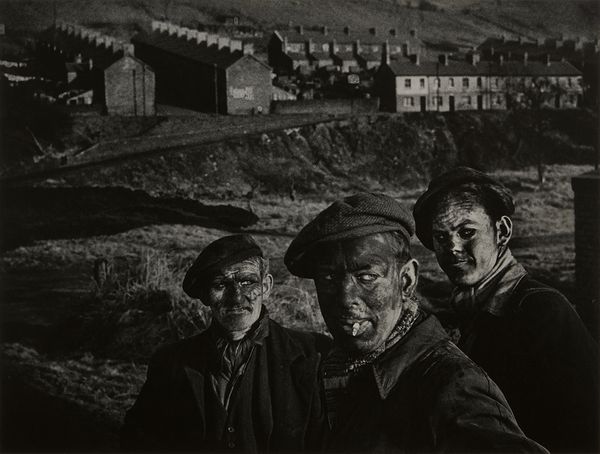
W. Eugene Smith, Three Generations of Miners. A Welsh Coal-Mining Town, Wales, Great Britain, 1950. Photographs New York.
Many of the works in the collection have a strong connection to the Institute of Design School in Chicago, founded in 1933 as The New Bauhaus by László Moholy-Nagy. The collection showcases the variety of important photographs that came from this tradition, including works by Callahan and Siskind, in addition to Arthur Siegel. The school is now appreciated as fundamental to the development of 20th century photography in America, and through the teaching of Callahan, Siskind, and others it encouraged experimentation as it set a new benchmark for the medium.
Below, we highlight a few works in detail from this remarkable collection, showcasing their relationship to cultural and historical touchpoints and how they represent the very best of 20th century photography.

Aaron Siskind, Kentucky 5, 1951. Photographs New York.
Alexander Rodchenko
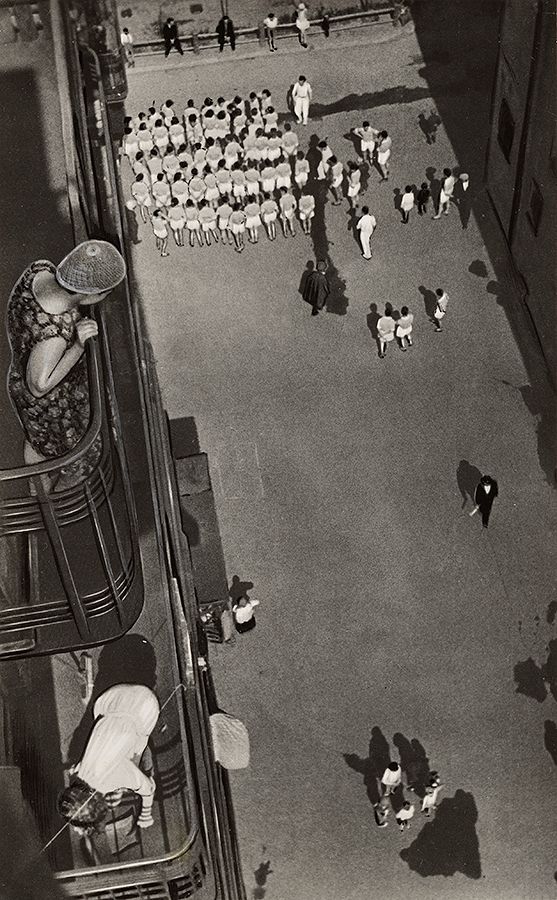
Alexander Rodchenko, Gathering for a Demonstration, 1928. Photographs New York.
Bold compositions, contrasts of perspective, and a graphic use of light and form define Alexander Rodchenko’s instantly recognizable approach to image making. The emergence of the handheld Leica camera in the 1920s offered him freedom to explore this approach liberally while on the go. He described his approach to photography as seeking to depict modern life itself, to produce compositions that were at once simple and complex, remarking that “it will be worthwhile working and fighting for photography as an art.”
He found an opportunity in the medium to create compositions from high vantage points with unique angles that would be difficult, if not impossible, to achieve with other mediums. Rodchenko also experimented widely with bold and experimental techniques — merging negatives and employing optical distortions, layered photograms, retouching, and overpainting in his efforts to represent the ceaseless motion felt from the rapid industrialization and political revolution of his time.
It is this inventive and hands-on approach that makes one of the prints from this collection so special. In Gathering for a Demonstration — one of his most well-known images — Rodchenko employs the unique vantage point of his studio balcony to capture the buzz of the scene just before a demonstration begins, the gaze of the assembled onlookers joining our own. The print on offer here is distinguished by hand-drawn highlights on the figures and by the removal of multiple puddles in the street. The difference is not subtle, as the elimination of these elements opens the composition, creating a greater sense of space aligned with the artist’s aim to revolutionize our way of seeing.
Harry Callahan

Harry Callahan, Eleanor/Silhouette (Chicago), 1948. Photographs New York.
Another remarkable print of an iconic image in the collection is Harry Callahan’s striking study of his wife Eleanor in silhouette. In this early print, Callahan uses a full range of tones against the warm white background in contrast with later prints that emphasized the graphic qualities of the composition with nearly pure blacks and whites. This approach results in a print with added depth and volume when compared to later prints. It also carries an exhibition label from The Museum of Modern Art, New York, on the verso. These elements converge in a rare print with spectacular wall presence, owing to the Masonite flush-mount presentation that is typical of how MoMA displayed photographs in the 1950s.
One of hundreds of studies Callahan made of Eleanor, this work illustrates the artist’s purely visual approach to photography. Intentional yet highly intuitive, it is exemplary of the poetic nature of his depictions of her but also showcases her skill as a model. Though highly personal and reflective of the close bond they shared from their first date in 1933 until the photographer’s death in 1999, Callahan’s photographs of Eleanor often explore the handling of light and volume. This is immediately identifiable in this work, as Callahan’s masterful lighting meets Eleanor’s virtuosic pose to result in a nearly abstract image focused on shape and form.
Man Ray
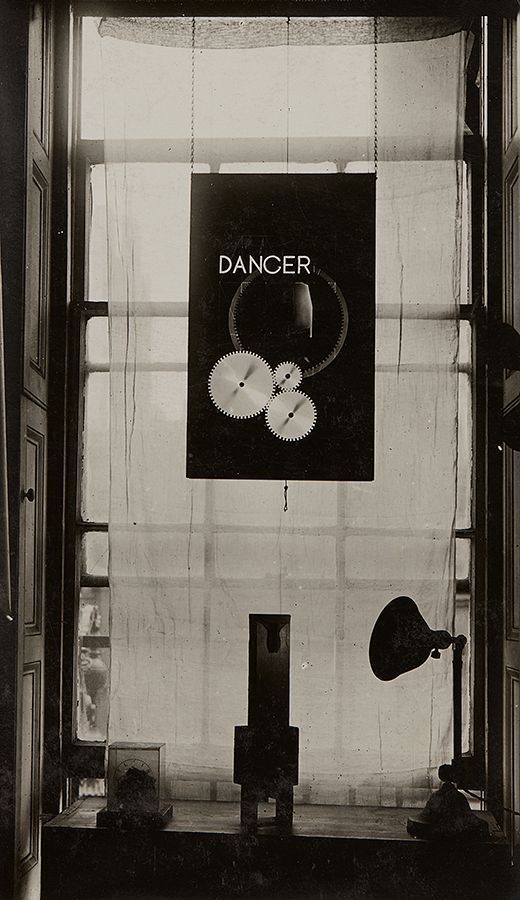
Man Ray, Study of Danger/Dancer and Other Works, circa 1920. Photographs New York.
This early Man Ray photograph dates to his time in New York City, prior to his move to Paris, when he lived on East 8th Street and was a key member of the city’s Dada scene. Taken in his studio, it shows several of his early Dada-inspired works. The print is inscribed “To André Breton” in pencil on the verso, and the central work in the image – the glass-and-metal-cog Danger/Dancer – was given by Man Ray to Breton. The work points out the similarity between the words “Danger” and “Dancer” and was inspired by a performance of a Spanish dancer. In 1968 it was damaged, and this photograph is very likely the earliest documentation of it, as well as of the two smaller sculptural objects on the window ledge: L’Inquietude (1920), and By Itself I (1918). The layering of art and documentation, and the marriage of photography with other media, are made manifest in this rare survivor from the earliest days of Man Ray’s career.
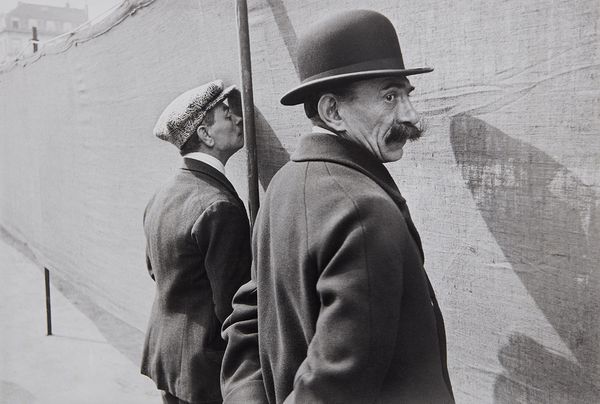
Henri Cartier-Bresson, Brussels, 1932. Photographs New York.
Figure + Form abounds with further important works to discover, including photographs by Lisette Model, Henri Cartier-Bresson, Edward Steichen, and many others.
Discover More from Figure + Form >
